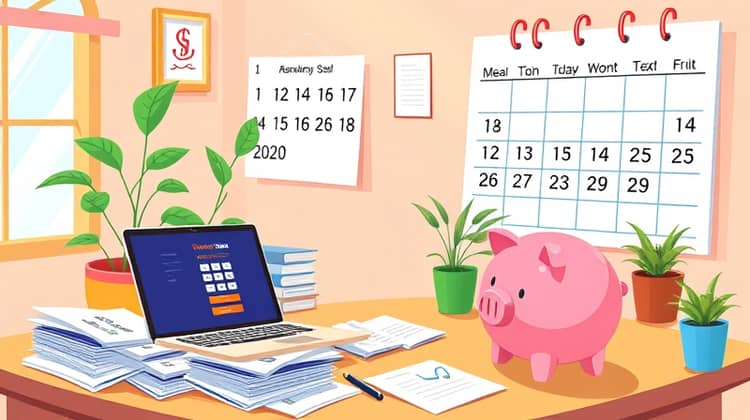Mastering Your Finances: Balancing Debt Repayment and Saving Simultaneously

In today's fast-paced world, managing your finances efficiently has become a crucial skill. Many people find themselves caught in the dilemma of wanting to save for the future while also dealing with existing debt. It is essential to strike a balance between these two important financial objectives to ensure both your current and future financial well-being.
The journey to mastering your finances begins with a clear understanding of your financial situation. This includes having a comprehensive overview of your income, expenses, debts, and savings. Once you have this information at your fingertips, you can set realistic goals and develop a plan of action to achieve them.
This article will delve into the importance of debt repayment and saving, as well as effective strategies you can implement to maintain a healthy balance between paying off debt and building your savings.
Understanding Your Financial Situation

To effectively master your finances, you must first take a step back and evaluate your current financial situation. This includes analyzing your income sources, expense categories, and outstanding debts. Understanding where your money is coming from and where it is going is crucial in making well-informed financial decisions.
Begin by tracking your monthly income, which may include your salary, bonuses, investments, or any side hustles. Next, list your monthly expenses, both necessary (such as rent, utilities, and groceries) and discretionary (like dining out and entertainment). This overview will help you identify spending habits and areas where you can cut back.
Lastly, compile a list of any existing debts—this includes student loans, credit cards, car loans, or personal loans. Knowing the total amount owed, interest rates, and payment due dates is crucial for creating a debt repayment strategy that complements your saving goals.
The Case for Debt Repayment

Debt can be a daunting burden, but prioritizing debt repayment is crucial for financial stability. High-interest debts, such as credit card balances, can lead to financial strain and affect your ability to save. By focusing on paying off your debts first, you free up more of your income for savings and investments in the future.
When you reduce your debt load, you not only improve your financial situation but also increase your credit score. A higher credit score opens doors to better interest rates, which can save you significant amounts when applying for loans in the future.
- Assess the types of debt you have (secured vs. unsecured)
- Identify high-interest debt and prioritize repayment
- Consider consolidating debts for easier management
By addressing your debt strategically, you can create a path toward financial freedom, allowing your savings to grow without the overshadow of looming debt.
The Importance of Saving

While debt repayment is essential, saving money is equally crucial for long-term financial security. Emergency funds, retirement savings, and investments provide a safety net for unforeseen circumstances and future goals. Having savings can prevent you from falling back into debt when unexpected expenses arise.
An emergency fund, ideally three to six months' worth of expenses, serves as a financial buffer during tough times, such as job loss or medical emergencies. This fund is essential in maintaining your financial stability and avoiding reliance on credit cards or loans during difficult times.
Moreover, saving for retirement is vital. The earlier you start saving, the more you benefit from compound interest. Even small contributions can grow significantly over time, ensuring you have ample funds to support yourself in retirement.
Strategies for Balancing Debt Repayment and Saving

Balancing debt repayment and savings might seem overwhelming, but with practical strategies, it is achievable. A well-structured plan allows for the efficient allocation of your finances toward both objectives, ensuring you can pay off debt while building a secure financial future.
Here are several effective strategies to help you navigate this balancing act for optimal financial health.
1. Assess Your Debt
Take a thorough inventory of your debts. Write down all outstanding balances, interest rates, and monthly payments. This exercise not only gives you insight into your financial obligations but also helps you prioritize which debts to tackle first.
Evaluating your debt can help identify the best course of action. It might be beneficial to focus on paying off high-interest debt first, as this will save you money in the long run.
2. Build an Emergency Fund
Establishing an emergency fund should be a priority alongside debt repayment. Aim to set aside at least $1,000 initially, then gradually increase this amount to cover three to six months' worth of living expenses. Having this safety net means you won't need to rely on credit when unexpected expenses arise, thus keeping you on track with your debt repayment plan.
Start with small, regular contributions to your emergency fund. Every paycheck, set aside a portion of your income specifically for this fund. Over time, these small amounts can accumulate, providing you with that necessary cushion.
3. Create a Budget
A budget is a powerful tool in mastering your finances. By creating one, you gain a detailed understanding of your income and expenses, allowing you to allocate funds toward debt repayment and savings effectively. Establish realistic spending limits for different categories, and adjust as necessary to meet your financial goals.
4. Prioritize High-Interest Debt
When it comes to debt repayment, prioritize high-interest debts first. These debts accumulate more interest over time and can hinder your financial growth. Focus on paying off credit card balances or personal loans that have higher rates before tackling lower-interest debts.
To manage repayments more effectively, consider the debt avalanche or snowball methods. The avalanche method focuses on paying off debts with the highest interest rates first, while the snowball method tackles smaller debts to build momentum. Below are steps for the avalanche method:
1. List your debts in order from highest to lowest interest rate.
2. Allocate any extra funds toward the highest interest debt while making minimum payments on the rest.
3. Once the highest debt is paid off, roll that payment into the next highest debt until all debts are cleared.
- Assess all debts thoroughly
- Focus on high-interest debts first
- Utilize repayment strategies like debt avalanche or snowball methods
By prioritizing high-interest debts, you can pay less in interest over time, freeing up more income for savings.
5. Explore Debt Repayment Options
Look into various debt repayment options, such as refinancing or consolidating loans. Refinancing can lower your interest rates, resulting in lower monthly payments and reducing the total interest paid over the life of the loan. Loan consolidation combines multiple debts into a single loan, simplifying your repayment process and potentially lowering interest rates as well.
You may also consider credit counseling or debt management programs that can provide assistance in managing your debts more effectively.
6. Automate Your Savings
Automating your savings is an effective strategy to ensure that you consistently contribute to your savings goals without having to think about it. Set up automatic transfers from your checking account to your savings account right after each payday. This approach not only enforces discipline but also makes saving a priority rather than an afterthought.
This way, you're less likely to spend the money you intend to save, and you'll build your savings over time without the temptation to dip into your funds.
7. Monitor and Adjust
As your financial situation changes, it's essential to monitor your progress and adjust your strategies accordingly. Regularly review your budget, debt repayment progress, and savings goals. If you find yourself in a situation where income increases or decreases, make the necessary adjustments to maintain balance between debt repayment and saving.
Conclusion

Mastering your finances through the balance of debt repayment and saving is a lifelong commitment that requires consistent monitoring and adjustments. By understanding your financial situation, prioritizing debt repayment, and establishing savings goals, you can create a secure financial future for yourself.
This journey may present challenges, but with discipline and appropriate strategies, you can achieve financial stability and security that allows you to enjoy your progress without the weight of debts holding you back.






